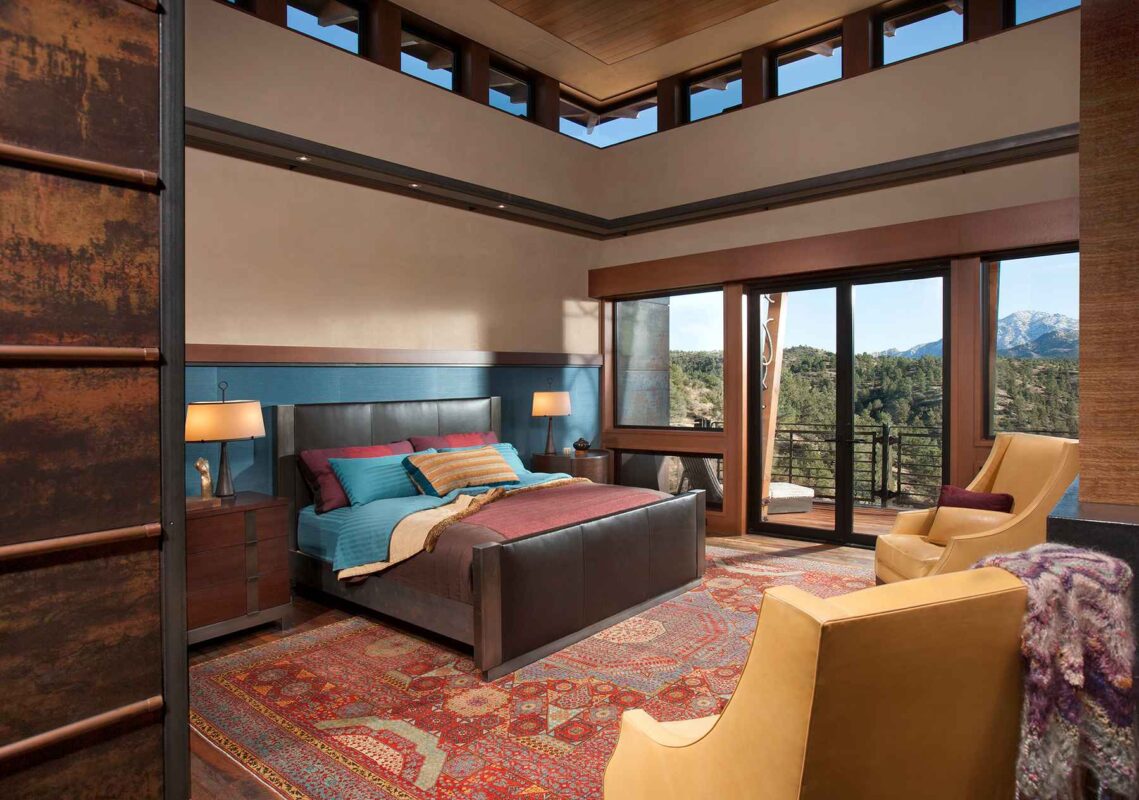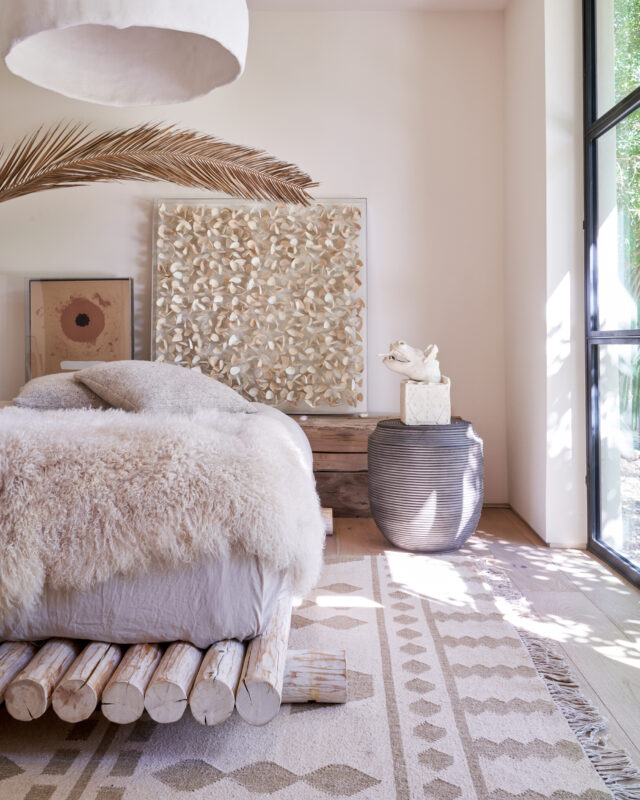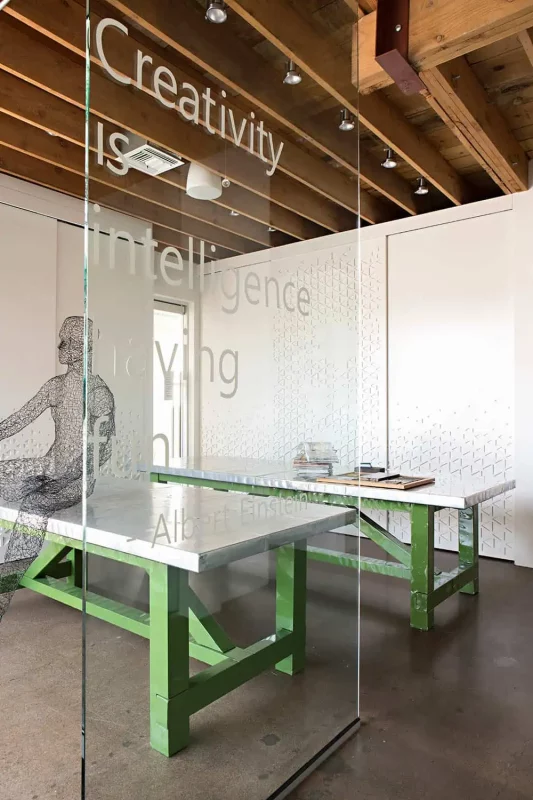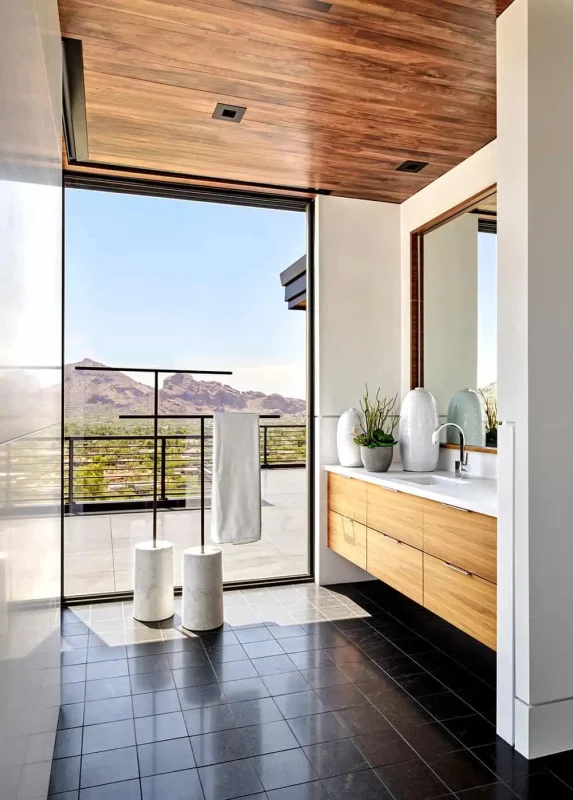Key Takeaways
- Design directly influences moods, wellbeing, and how comfortably people live in a space.
- The marriage of form and function is essential — beauty alone isn’t enough.
- Embedding client identity, thoughtful lighting, and nature elevates design from pretty to powerful.
For more than 25 years, IMI Design has been guided by the principal belief that “Great design elevates the human spirit”. Good interior design matters, and when it’s executed well, it’s more than just how it looks, a space has the power to influence your mood! Interior design affects our mental health. Environmental psychology has existed for thousands of years, despite the recent common knowledge and popularization of the connection between interior design and emotions. The rise of neuroscience and its findings have shown how the ability of interior design elements can evoke both positive and negative sentiments. Hiring an experienced interior designer can ensure that the spaces in which we live, work, and play can be designed with décor that encourages creativity, and fosters feelings of safety, peace, and happiness.
“BEAUTY HAS ALWAYS HAD A PROFOUND EFFECT ON THE HUMAN SPIRIT. THE SPACES IN WHICH WE LIVE AND WORK SHOULD AFFECT US IN A POSITIVE AND UPLIFTING WAY.” – Anita Lang, Founder & CEO of IMI Design
Anita Lang, Founder & CEO of IMI Design
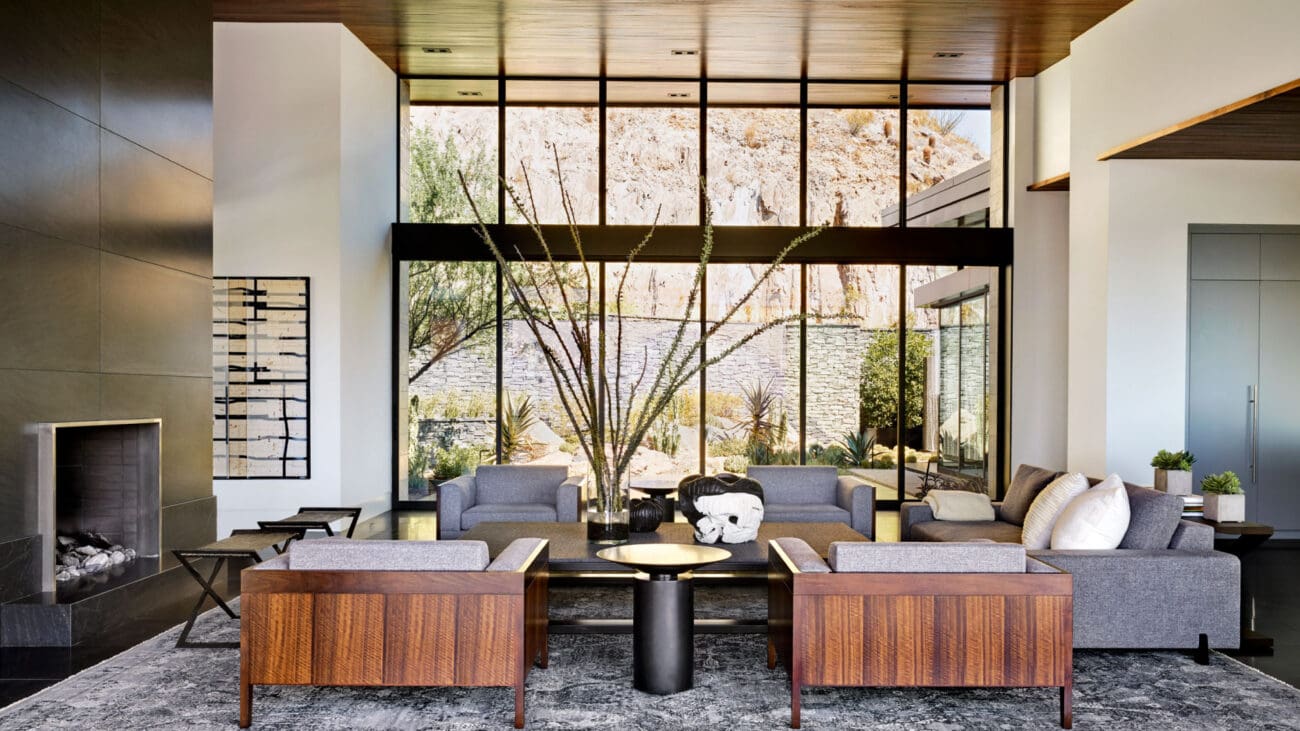
IMI Design Creation of a Desert Modern home in Paradise Valley, Arizona
Good interior design evokes an emotional response that is achieved in several ways through aesthetic choices such as soft furnishings, lighting, and materiality. Beyond that, we must ask, what’s the difference between good and superior interior design?
One of the key element that distinguishes good interior design from exceptional An exceptional interior designer goes beyond aesthetic styles and ‘trendy’ elements. is based on its purpose and functionality. Well-crafted interior design concepts are inspired by the person or people that will be experiencing them. What differentiates an inexperienced interior designer from an expert interior designer is within the curation of interior designs that are befitting of the end user; great interior design needs to account for – and be built on – the lifestyle requirements of the end user. In other words, that is functionality.
How can you measure great interior design?
Great interior design is achieved when beauty and functionality are harmonious, it’s a delicate balance. The stark reality is that even the most beautiful design fails when it’s inconvenient or uncomfortable. When it comes to measuring the success or ‘greatness’ of interior design, the real barometer is if the clients finds it to be effective. Both form and function must be manifested.
“FORM FOLLOWS FUNCTION”
Louis H. Sullivan
You might have heard the famous architectural phrase “Form follows function” which was coined by architect Louis H. Sullivan in his 1896 essay “The Tall Office Building Artistically Considered“. Well, it’s an adage that is often heard, rarely understood, and has been widely debated by architects, architectural students, and interior designers for more than a century. The famous architectural phrase is based on the activities/lifestyle of the end user, and points to Sullivan’s design philosophy for multi-use buildings.
The takeaway is this, both form and function are instilled within the best interior design concepts. Here at IMI Design, we ensure that the factors of lifestyle requirements are carefully considered – they are part of the compelling design. We create opportunities in crafting intelligent and functional beauty through lighting, natural materials, and color.
How can the interior design process incorporate a client’s lifestyle and persona?
When looking for the best interior design firm or ideal interior designer for your residential, commercial or hospitality space, one way to evaluate if they have the design chops is based on the following questions we ask our clients. These are the 4 most critical questions your interior designer should ask to bring your lifestyle and persona into your project.
1. How are interior design clients going to use the space:
- What types of activities are going to happen there?
- How can we space plan to ensure those activities can be realized in this home?
This question can help both the interior designer and their client understand the objectives of the space and plan a design that achieves the desired outcome. For instance, a family room may have a television, which is very typical for American families, but we may also want to create a place where they can curl up with a book or have a good conversation. If it’s a family with young children, we think about incorporating storage into that family room design for the toys so that they can be quickly tucked away.
IMI Design Creation of a Fresh Traditional home in Paradise Valley, Arizona
2. How to create interior designs with your client and their lifestyle as the muse:
We believe that the difference between good and great design is really thinking through the different ways that a client functions in a space and then making that easy for them through the interior design concept. Our founder and CEO, Anita Lang adds, “I love doing that for families, couples, and individuals alike, and really stepping into their shoes to understand what will work for them inspires me in my work.”
Next, we consider the aesthetic foundation of those concepts that are client-centric as it puts their needs first and is then articulated in a beautiful way. Even if two different clients gravitate to the same style, the output would be completely different as each design is infused with the client’s personality. We can get to the heart of their persona by asking the following questions:
- How were they raised – values, siblings, lifestyle?
- What is their cultural background?
- What makes them happy – and what drives their happiness?
We take in the client’s persona and lifestyle to curate designs that influence and elevate them. This is achieved through space planning by working out the functional requirements that then are articulated with materials, textures, and color to set the tone or ambiance of the interiors.
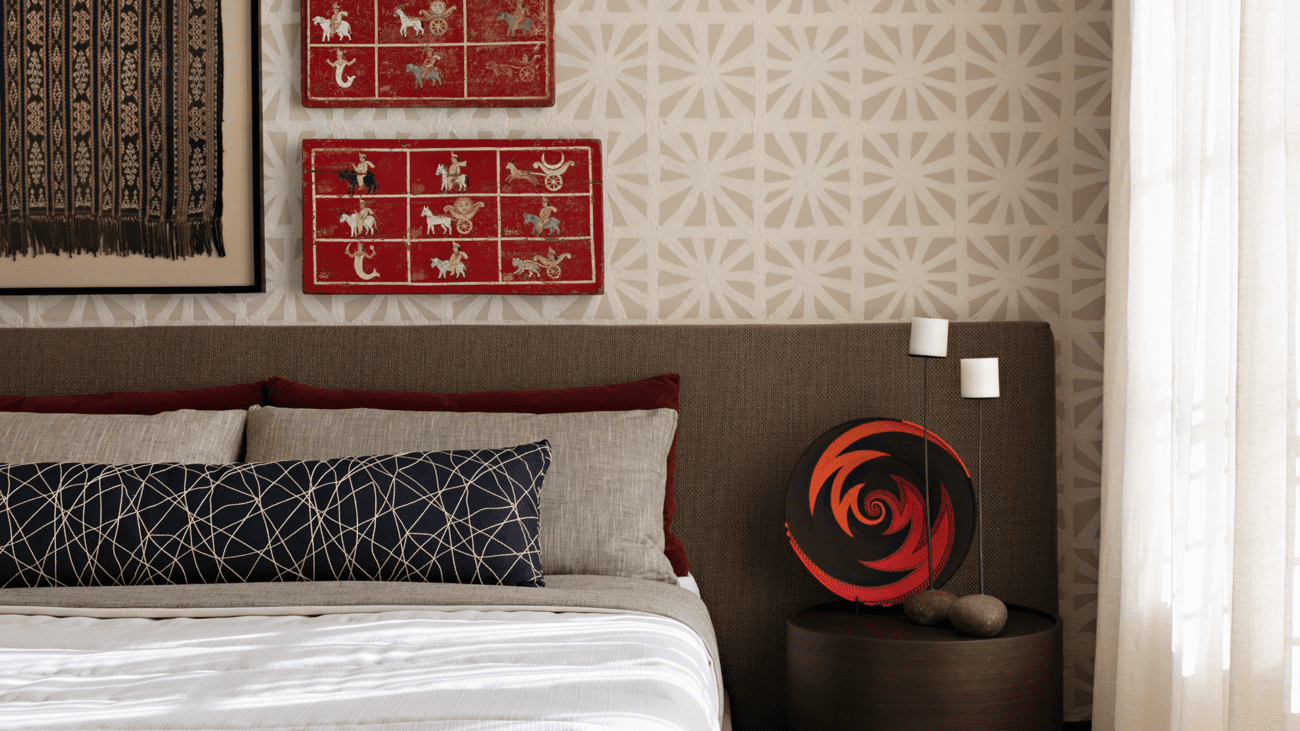
IMI Design Creation of a Modern home in Los Angeles, California
3. The importance of incorporating intelligent interior lighting design for mental health:
Some things stay true across all humanity, and that is the need and desire for light. Light influences our psychology, and mood, and can literally reduce depression and boost happiness. Sunlight can also influence our energy and motivation at home and work. In fact, a 2002 study reported that daylight is a direct correlation to increasing sales volume in retail settings. One report found that employees that had access to natural light outperformed their coworkers that didn’t have access to sunlight in terms of retail sales performance.
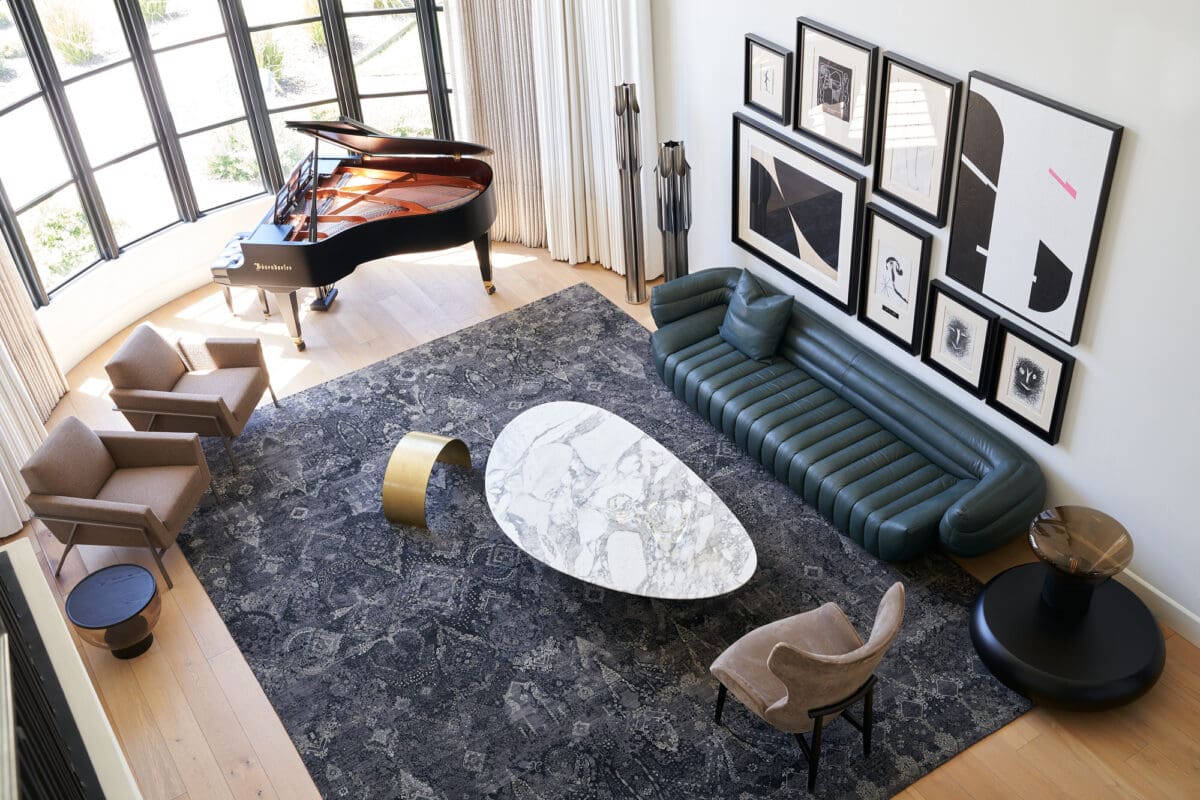
IMI Design Creation of a Curated home in Paradise Valley, Arizona
Lang discusses the importance of daylight, “I need daylighting; I can’t live in a room that doesn’t have a window. When thinking through a client’s remodel or new construction, I think the directional exposure greatly impacts the harsh rays of daylighting in a tight room as often as possible, and when possible, I try to include two different exposure locations. Artificial light sources also can be used to mimic the all-important day lighting. Often, especially in subterranean areas, I will create a long-wash wall treatment that feels like rays of light coming from above to enhance a dark corner.”
4. Implementing natural materials with sustainable business practices:
People respond to nature and using natural materials like wood and stone has calming effects. Adding nature in interior design can bring the benefits of nature indoors. In fact, as growing body of research on the biophilia effect shows that exposure to nature or its elements brings several benefits such as learning rates, reduced blood pressure and stress, as well as accelerated healing.
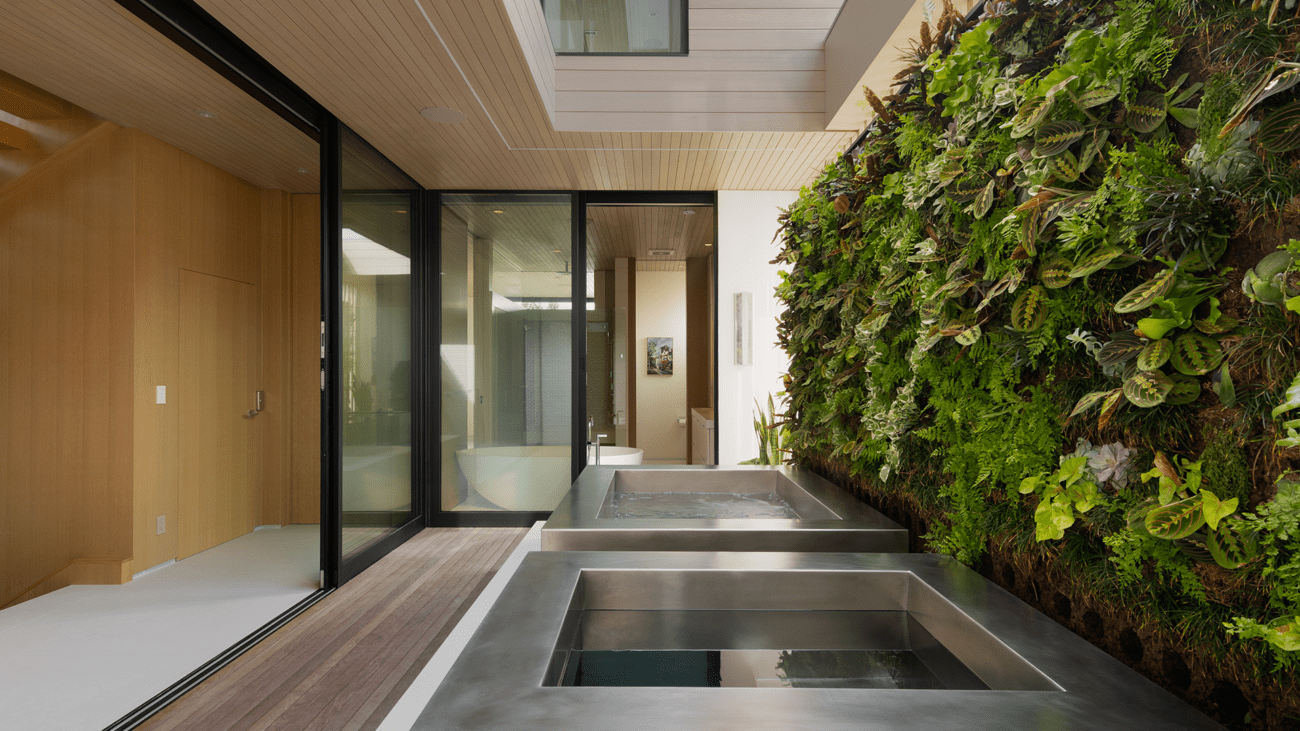
IMI Design Creation of a Modern Beach home in Manhattan Beach, California
The term “biophilia” was popularized by biologist Edward O. Wilson in 1984, which means “the passionate love of life and of all that is alive.” Biophilic design takes the aesthetics and tangible benefits of nature and incorporates them into designs that build an environment that is beautiful and scientifically beneficial!
“Incorporating nature into the built environment is not just a luxury, but a sound economic investment in health and productivity, based on well-researched neurological and physiological evidence.”
Terrapin Bright Green, LLC “The Economics of Biophilia: Why Designing with Nature in Mind Makes Financial Sense”
Sometimes, porcelain and quartz are chosen for function, however, Lang always brings in another material from mother earth to compensate. We have an extensive library of tried-and-true resources and manufacturers that are conscious of harvesting sustainable materials and business practices that ensure ethical choices in interior design.
Integrity in design from quality aesthetics to conscious resourcing to the heartfelt implementation all impact the resonation of a space. Lang says, “I feel as a designer it is my responsibility to ensure all the criteria are comprehensively considered.”
The Takeaway
When looking for the ideal interior design partner for a luxury residence, commercial or hospitality space, it’s important to consider several factors. An exceptional interior designer goes beyond aesthetic styles and ‘trendy’ elements. They cater to the client by infusing their passions, lifestyle, and taste, while ensuring the spaces they beautify are functional and comfortable. If you’re want to learn more contact us here.
FAQs
- How does design affect mental health?
Good design can promote feelings of safety, calm, and happiness; poor design may cause stress, discomfort, or withdrawal.
- Why is form + function balance so important?
Aesthetic appeal alone is insufficient — if a space doesn’t work well, it fails the people who live in it.
- How do designers use a client’s lifestyle in the process?
They ask detailed questions about habits, priorities, and preferences to guide spatial layout, materials, lighting, and decor.
- Can lighting really change how I feel in my home?
Yes — daylight is tied to improved mood and productivity, and good artificial lighting can replicate those benefits.
- What is the role of natural materials in design?
They harness biophilic effects — reducing stress, improving comfort, and connecting occupants to nature.




